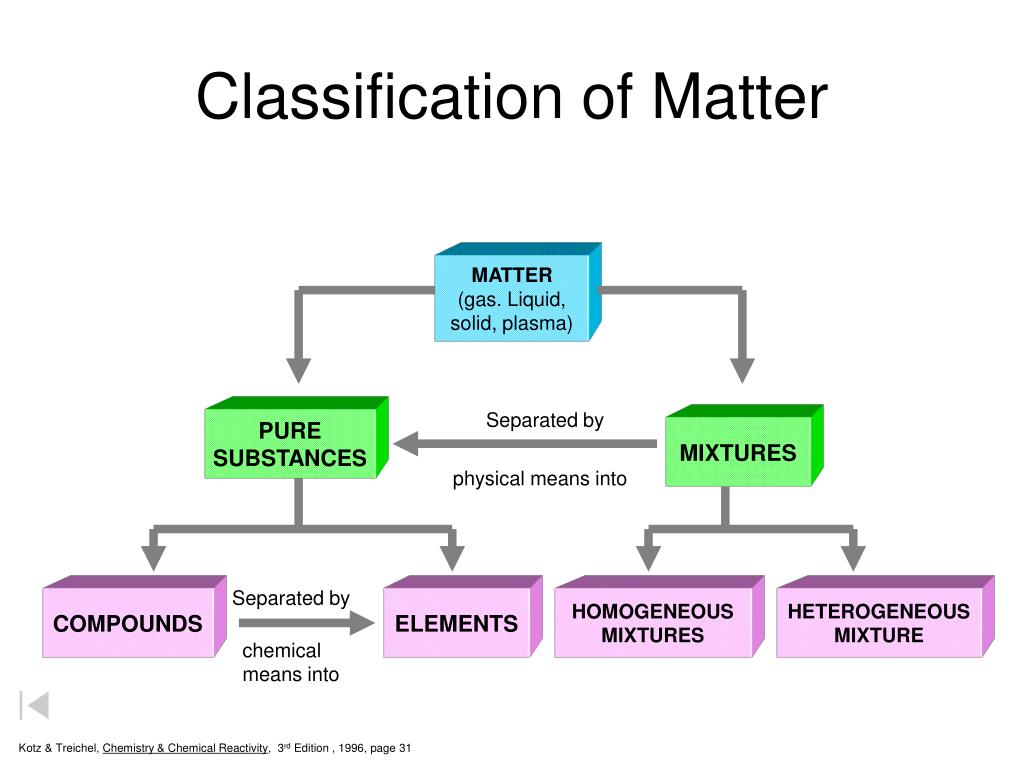go back
- Atom: Smallest unit of matter that cannot be chemically divided
- Element: Substance that cannot be decomposed further by a chemical reaction. All of its atoms have the same number of protons.
- Compound: Substance made of atoms of different elements bonded together chemically
- Molecule: group of atoms bonded together covalently

Pure Substances
- Fixed or constant composition
- Cannot be separated by physical means
- Have well defined physical properties
- Melting point
- Boiling point
- Hardness
- Density
- Colour
- Have constant chemical properties
Mixture
- Contain 2 or more different substances, in proportions that can vary
- Properties vary with composition, depends on the identity and amount of constituents
- Properties of individual constituents can be used to separate the mixture
Homogenous Materials
- Have uniform composition throughout
- includes all pure substances (elements and compounds) and some mixtures
- The only kind of mixture that is homogenous is a solution, e.g. salt water
- Alloys
Heterogenous Materials
- Non-uniform; you can see differences from one section to another
- The constituents are physically separated
- E.g. in a different phase
- Examples:
- Granite (mixture of different mineral grains)
- Milk (fat globules suspended in water)
- Toothpaste (solid particles suspended in liquid)
